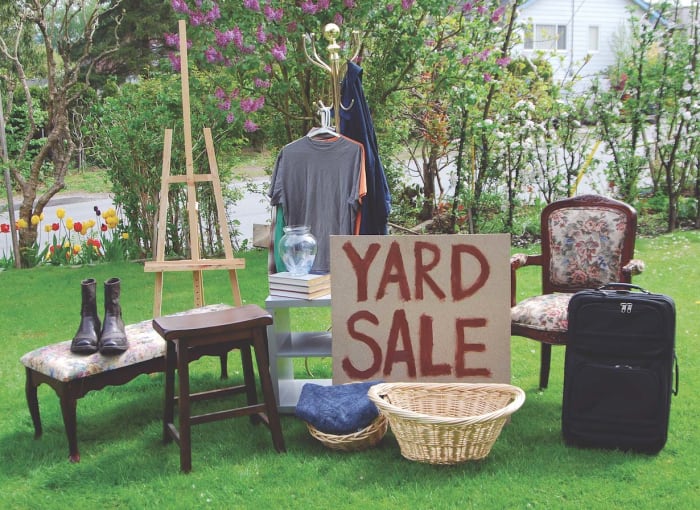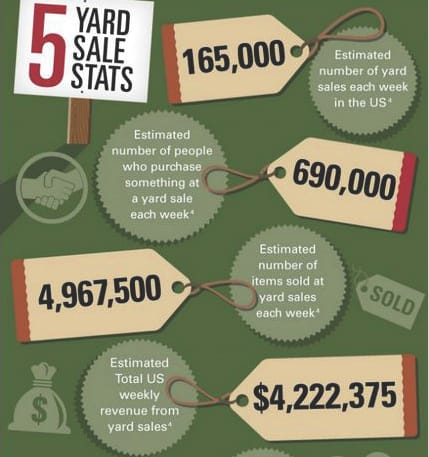This is a question all antiques dealers should ask themselves: Do you have products looking for a market, or do you look for products that fit your market?
Most of us in the antiques business are product-focused rather than market-focused. When we are out picking, we look for unique items that we can buy low and sell high. Who might buy an item is usually an after-thought.
This methodology is commonplace in the antiques trades. Joe Willard, author of The Pickers Bible: How to Pick Antiques Like the Pros suggests that our antiques inventories are harvested.
“The fact is, the majority of the inventory that many dealers have originated from the front lines of picking,” Willard says. “What you see in an antiques store or a museum is an assemblage of items. It didn’t just happen. It was built over many years of gathering, finding, trading and collecting. It was all harvested”
Harvesting is a good analogy. A farmer harvests his crop regardless of what the market is for his product. When soybean prices are down, farmers still pick their crop and sell it for what the market will bear, regardless of how much it cost to produce the crop.
Antiques dealers are very much like this; like farmers, we harvest when the crop is ready to be picked. Whenever we are out-and-about and find something that is ripe-for-the-picking, we buy it and add it to our inventory. We harvest our crop and hope that someone will buy it at a profitable price. Antiques dealers have survived in this fashion for over 100 years. Many dealers will operate in this fashion forever.
Marketplaces have evolved
Today’s market is unlike anything that’s been seen in the past. Both competition and product supply are at unheard-of levels. More than 10 years ago, in my first column for Antique Trader, I addressed the new market reality:
“In America today, there is a paradigm shift occurring that will completely restructure the antiques business. What are the main drivers of the new paradigm? There are two: a soon-to-be crushing overabundance of supply and universal distribution.
Universal distribution challenges antique stores
A generation ago, the bulk of antiques and collectibles were housed in antique stores. Not anymore; antiques sales have moved from bricks-and-mortar to yards, homes, and (for online sellers) desktops. Everyone sells antiques and vintage; marketplaces have exploded. Live auctions, online auctions and ecommerce, estate sales, yard sales, flea markets, and consignment shops are ubiquitous. An infographic published by Yardsales.net illustrates just how competitive the market is each week in the U.S.
Yard sales: 165,000
Buyers (purchasers): 690,000
Items sold: 4,967,500
Revenue: $4,222,375
That’s roughly $220 million annual revenue from yard sales alone. Combined U.S. resale markets total billions of dollars per year, and not much of it occurs in antique stores.

Yard sales are only one challenge for antiques and collectibles businesses.
Image courtesy Getty Images
Marketing focus in three steps
Antiques dealers cannot sell their goods at yard-sale prices; neither can they accept low-ball bids. How, then, can they compete in today’s marketplace? By focusing on a selling channel and researching a market before developing a marketing strategy and spending money. There are three steps to accomplishing this:
Step One: focus on a selling channel
There are three antiques selling channels; each channel requires a unique set of skills and marketing tactics:
1. Bricks-and-Mortar (B&M). Bricks-and-mortar retailing is customer-oriented; it’s about creating a memorable shopping experience. Retailers focus on merchandising, traffic flow, websites, social media and local search. Retailers market locally. Customers remember the store in which they made a purchase.
2. Online selling is product oriented. Online buyers search by product name or category. Customers remember the online marketplace on which they made a purchase. They won’t remember the name of the business that sold them an item; they will say to their friends “look what I got on eBay!” Online selling requires the ability to write effective product descriptions, take great photos, create lots of listings quickly, and pack and ship in a timely fashion.
3. Being a mobile (shows and fairs) antique dealer is time-consuming and exhausting but allows time between shows for picking. Customers will remember the show at which they made a purchase, but they won’t remember the booth or dealer.
Each selling channel has particular expenses and workflow. For most of us, there isn’t enough time in a week to do everything. These channels can be profitable, but if you decide to employ them simultaneously you will sacrifice both quality and profits.
Step Two: research
Research begins by learning who the buyers are for what you have to sell (demographics): Where do they live? How much money do they earn? What’s their educational level? What are their buying habits? Marketing is like archery: you must know what your target is before you can hit it. Research defines your target. This information is available online if you dig for it. For example:
If your focus is online collectibles, here is some insight from IBISWold.com.
If you’re selling vintage goods, Marketing Artfully provides a good analysis of who your buyer is.
Trade Associations pop up around identifiable niches, like antiques, musical instruments, crafts and hobbies, toys, and so on. Associations sometimes collect and publish benchmark data, including demographics of the niche. To see if a trade association exists for your specialty, google the specialty (for example, “toys”) and the words “trade association.”

Discover more about your market by visiting the United States Census Bureau.
Image courtesy United States Census Bureau
Once you know who your target customer is, find out how many similar people live in your market area. This is the group you will market to. Your starting point will be the United States Census Bureau, which collects data on many aspects of the U.S. economy. The USCB has a data portal titled Census Business Builder: Small Business Edition that allows easy access to census data for your locale, and for most business types (antiques and collectibles dealers fall under the general “used merchandise” category).
The site “provides easy access to information about the residents and businesses to help you open or expand your business…presents key information that entrepreneurs and small business owners need to better understand their market.” Links to video tutorials (“Help & FAQs”) and downloadable instructions (“Overview”) are included.
Pre-assembled reports using census data are available through companies like Dun & Bradstreet and IBISWorld, but they can be expensive. Sometimes these market reports can be had for free at your public library. Libraries subscribe to many types of databases; for example, the Lancaster, Penn., library offers access to four top-tier business databases.
Step Three: develop a mailing list
Regardless of the selling channel used, you must develop a customer mailing list. Your customer list is your business: not your B&M store, your online listings, or your show circuit. Sellers come-and-go. Buyers don’t need you; they have lots of shopping options. But shoppers prefer to deal with someone they know, like and trust. Regardless of your selling channel, your marketing should focus on developing your customer mailing list.
Today’s dealers are buried in economic noise and sales messages. For your message to be heard clearly, you must decide who you are going to talk to and then give them something worthwhile to listen to. As Dr. Philip Kotler, “The Father of Modern Marketing” explains:
“Marketing management is the art and science of choosing target markets and getting, keeping and growing customers through creating, delivering, and communicating superior customer value.”










